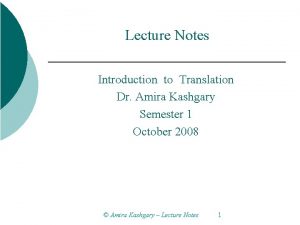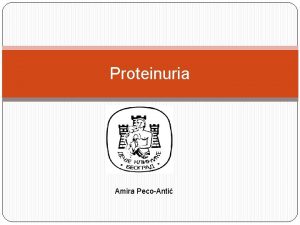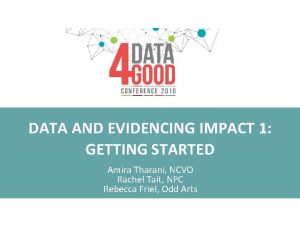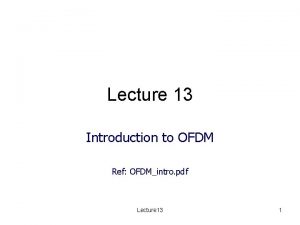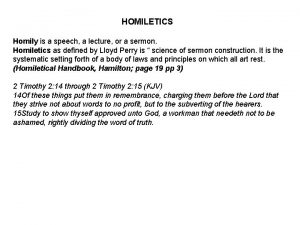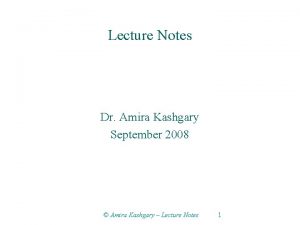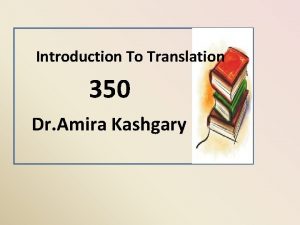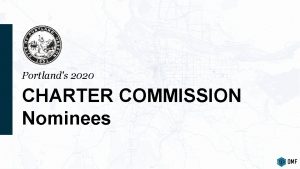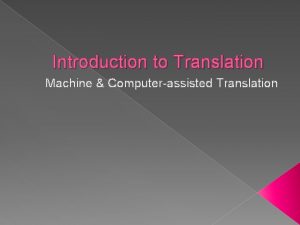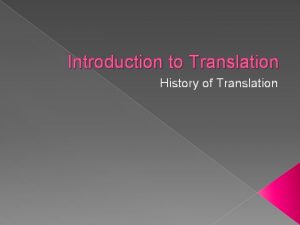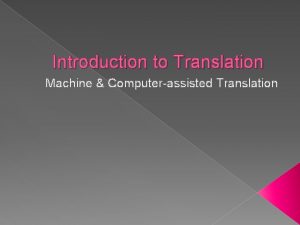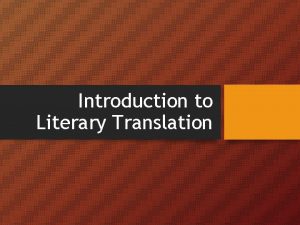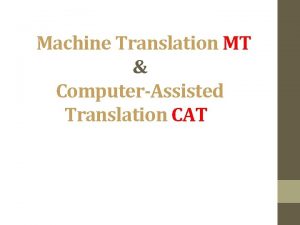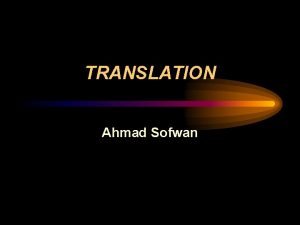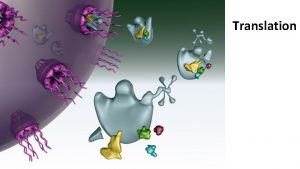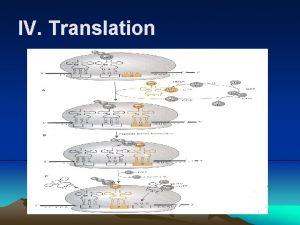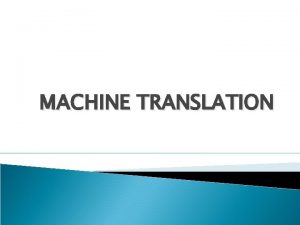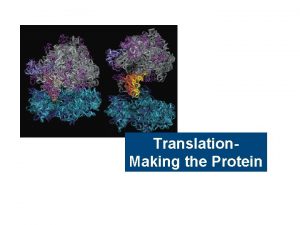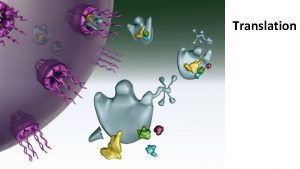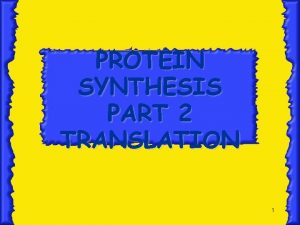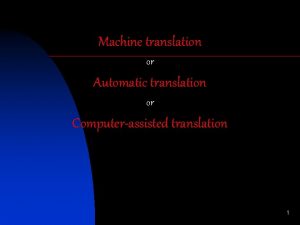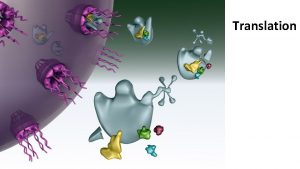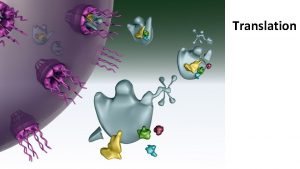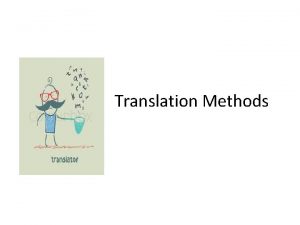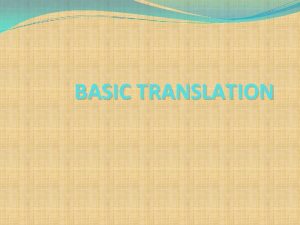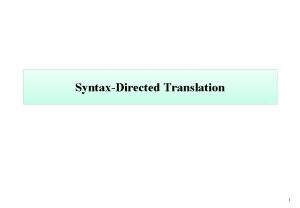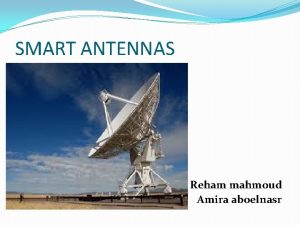Lecture Notes Introduction to Translation Dr Amira Kashgary






























- Slides: 30

Lecture Notes Introduction to Translation Dr. Amira Kashgary Semester 1 October 2008 © Amira Kashgary – Lecture Notes 1

Translation Dr. Amira Kashgary akashgary@gmail. com King Abdulaziz University Department of English September 2008 © Amira Kashgary – Lecture Notes 2

What is Translation? As a subject, translation is defined as all the processes and methods used to convey meaning of the source language into the target language by means of : * The verb “translate” has been equated with synonyms such as “reader”, “rephrase”, “transmit”, “re express” “replace”. © Amira Kashgary – Lecture Notes 3

What is Translation? We "render", "reproduce", "convey", and "transfer" For example: Write ﻳﻜﺘﺐ ﺣﺎﺳﻮﺏ Computer ﻛﻤﺒﻴﻮﺗﺮ © Amira Kashgary – Lecture Notes 4

What is Translation? ¡ ¡ ¡ According to New mark (1981) translation is an attempt to replace a message or a statement in one language by the same message or statement in another language. For Catford (1965) translation is “the replacement of textual material in one language (SL) by equivalent textual material in another language (TL)’ (20). Nida (1964) defines translation in terms of the receptor’s understanding of the translated text, in other words, the intelligibility of the TL text. Accordingly, translation is “ reproducing in the receptor’s language the closest equivalent of the message of the SL, first in terms of meaning and then in terms of style” © Amira Kashgary – Lecture Notes 5

What is Translation? What all definitions agree on are the following: ¡ Translation involves determining two extremes at the same time; the SL demands and the TL demands. ¡ Translation involves thinking and rethinking, expressing and re-expressing. ¡ Translation involves “equivalence” in respect of different levels of presentation (equivalent in respect of context, of semantics, of grammar, of lexis, etc. ) and at different ranks (Word-for-sentence) and in different degrees (fully or partially equivalent) © Amira Kashgary – Lecture Notes 6

What do we translate? We translate nothing but "MEANING". © Amira Kashgary – Lecture Notes 7

What is Meaning? It is a complicated network of language components It is the product of different elements of language. Taken together occurring in a certain type of texts and contexts, and directed to a certain kind of readership. © Amira Kashgary – Lecture Notes 8

language components Words (vocabulary Grammar (syntax) Sounds (Phonology) Style © Amira Kashgary – Lecture Notes 9

What do we translate? We are always interested in how these elements combine, produce, influence, reflect and crystallize meaning. © Amira Kashgary – Lecture Notes 10

How do we translate? Making use of two concepts Processes of Translation Methods of Translation Transfer Restructuring Analysis © Amira Kashgary – Lecture Notes 11

Processes of Translation It describes how we proceed at translating something in practice, in other words, it is the STAGES of translating © Amira Kashgary – Lecture Notes 12

Processes of Translation Since translation is a communicative process, it has to deal with the following processes: 1. 2. 3. Analysis (Comprehension) Transfer Restructuring (Rearrangement or rewriting) © Amira Kashgary – Lecture Notes 13

What do we translate? The process of Transfer , or what linguists call "Transfer Strategy" can be summarized in the following steps: © Amira Kashgary – Lecture Notes 14


Translation: Process vs. Product We have to distinguish between ¡ Translating: the process which refers to the activity rather than the tangible object, and ¡ Translation: the product of the process of translating, i. e. the translated text. The word translation can also refer to the abstract concept which encompasses both the process of translating and the product of that process. © Amira Kashgary – Lecture Notes 16

Translation: Process vs. Product In order to arrive at a comprehensive and useful understanding of the process of translating we need to draw on the resources of linguistics, particularly, psycholinguistics and socio linguistics. The first of these examines the process in the mind of the translator, the second places the source language text (SLT) and the target language text (TLT) in their cultural context. © Amira Kashgary – Lecture Notes 17

The Translation Process (Bell, 1991: 21) Memory SLT Analysis Semantic Representation Synthesis © Amira Kashgary – Lecture Notes TLT 18

Translation Process 1. 2. 3. The SLT is transformed into a TLT by means of process which take place within memory: The analysis of the language specific text (the SLT) into a universal (non-language specific) semantic representation. The synthesis of that semantic representation into a second language specific text (the TLT). © Amira Kashgary – Lecture Notes 19



Methods of Translation literal semantic formal pragmatic creative vs. vs. vs. © Amira Kashgary – Lecture Notes free communicative dynamic non-pragmatic 22

Methods of Translation Monolingual communication (Bell, 1991 : 18) Code Channel SENDER Channel Signal Receiver Content © Amira Kashgary – Lecture Notes 23

Bilingual communication (Bell, 1991 : 19) Code 1 Channel SENDER Channel Signal 1 Translator Content 1 Code 2 RECEIVER Signal 2 Content 2 © Amira Kashgary – Lecture Notes 24

Translation: Process vs. Product 1. 2. 3. 4. 5. 6. 7. 8. 9. Translator “ “ “ “ receives signal 1 containing message recognizes code 1 decodes signal 1 retrieves message comprehends message selects code 2 encodes message by means of code 2 selects channel transmits signal 2 containing message © Amira Kashgary – Lecture Notes 25

Translation: Process vs. Product There are crucial difference between communication and translation as follows: ¡ There are two codes, two signals and consequently two sets of content provided that there is no 100 percent equivalence between languages © Amira Kashgary – Lecture Notes 26

What are the tools of a Translator? 1. Mono-lingual dictionaries (English) l l l 2. Mono-lingual (Arabic) l l 3. Webster’s (unabridged) dictionary The Oxford English dictionary Encyclopedic World dictionary Al Munjid Al Waseet Bilingual dictionaries l l English / Arabic ¡ Al Mawrid ¡ Al Nafees Arabic / English ¡ The Hans. Wehr Dictionary of Modern Written Arabic © Amira Kashgary – Lecture Notes 27

What are the tools of a Translator? 4. Dictionaries of English usage l l l Dictionary of English usage Thesaurus Dictionary of slang terms Dictionaries of Idioms Dictionaries of proverbs © Amira Kashgary – Lecture Notes 28

What are the tools of a Translator? 5. Specialized Dictionaries l l Encyclopedia (general) Encyclopedia (specialized) Grammar Books Computers © Amira Kashgary – Lecture Notes 29

Assignments Assignment # 1 Make a list of Arabic words which you find difficult to translate into English. Organize your list according to domains. For example, religion, food, social customs, idiomatic expressions, and so on © Amira Kashgary – Lecture Notes 30
 01:640:244 lecture notes - lecture 15: plat, idah, farad
01:640:244 lecture notes - lecture 15: plat, idah, farad Translation lecture notes
Translation lecture notes Jutarnji24
Jutarnji24 Amira adata
Amira adata Amira kharroubi
Amira kharroubi Amira centro estetico
Amira centro estetico Amira gohara
Amira gohara Introduction to biochemistry lecture notes
Introduction to biochemistry lecture notes Introduction to algorithms lecture notes
Introduction to algorithms lecture notes Project procurement management lecture notes
Project procurement management lecture notes Theology proper lecture notes
Theology proper lecture notes Objective of public sector accounting
Objective of public sector accounting Software project management handwritten notes pdf
Software project management handwritten notes pdf Magnetism
Magnetism Physics 111 lecture notes
Physics 111 lecture notes Physical science lecture notes
Physical science lecture notes Power system dynamics and stability lecture notes
Power system dynamics and stability lecture notes Microbial physiology notes
Microbial physiology notes Mechatronics lecture notes ppt
Mechatronics lecture notes ppt Limits fits and tolerances
Limits fits and tolerances Financial engineering notes
Financial engineering notes Bjt transistor notes
Bjt transistor notes Requirement analysis in software engineering notes
Requirement analysis in software engineering notes Introduction to ofdm
Introduction to ofdm Land use planning lecture notes
Land use planning lecture notes Project quality management lecture notes
Project quality management lecture notes Lecture notes on homiletics
Lecture notes on homiletics Foundation engineering lecture notes
Foundation engineering lecture notes Image processing lecture notes
Image processing lecture notes Intermediate microeconomics lecture notes
Intermediate microeconomics lecture notes Cloud computing lecture
Cloud computing lecture

